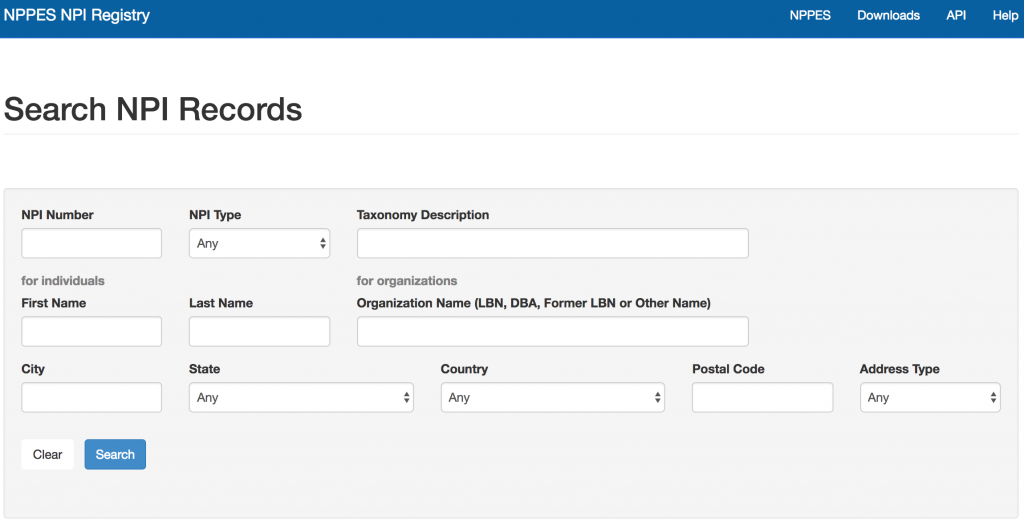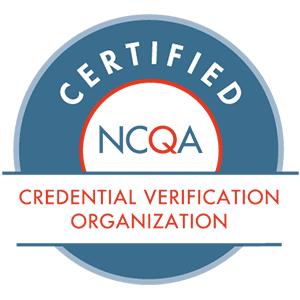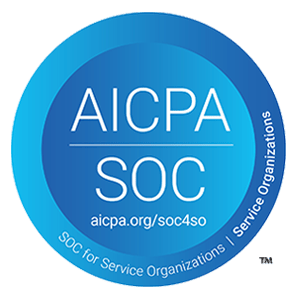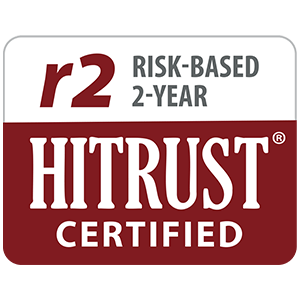All physicians, providers, and healthcare organizations who are covered under The Health Insurance Portability and Accountability Act (HIPAA) are required to apply for a National Provider Identifier (NPI). This unique identification is an industry standard for providers, health plans, prescribers, healthcare clearinghouses, business associates, and more to submit or process health insurance claims.
Because of the elaborate and dynamic nature of the U.S. healthcare system, it is essential to have a well-connected and accessible database to reference provider information quickly. Whether you’re new to searching the NPI Registry (NPPES) or have been performing searches on a reoccurring basis, learn the best way to look up NPI numbers for providers and healthcare organizations.
The National Plan and Provider Enumeration System (NPPES)
Individuals or organizations apply for NPIs through the CMS National Plan and Provider Enumeration System (NPPES). The NPPES is a database administered by the Centers for Medicare and Medicaid Services (CMS) to “improve the efficiency and effectiveness of the electronic transmission of health information” by standardizing the format of unique identification for healthcare providers and health plans.
CMS makes periodic updates to the NPPES system to help make it easier for a better overall experience. Here are some of the latest feature improvements to the database for enhanced NPI lookup for physicians and healthcare organizations.
NPI Type 1 and Type 2 Providers
There are two types of healthcare providers in terms of NPI – Type 1 and Type 2 providers. The Centers for Medicare and Medicaid Services (CMS) provided an important document that helps clearly identify many factors surrounding National Provider Identifiers – CMS | The Who, What, When, Why & How of NPI: Information for Healthcare Providers.
Type 1 Providers
Healthcare providers who are individuals: physicians, dentists, and all sole proprietors. An individual is eligible for only one NPI.
Type 2 Providers
How to Look Up and Verify Type 1 and Type 2 Providers with a NPI
The NPPES NPI Registry is a free directory provided by CMS to look up all active National Provider Identifier information. CMS provides an NPI record online search tool as well as an active downloadable NPI list.
Looking up a physician or healthcare organization on the NPPES NPI Registry is pretty straightforward. However, when referencing any database for the first time, a small learning curve can exist. For NPI validation, you will need to quickly associate which type of provider you are looking to reference – either an individual or an organization.
Next, it’s beneficial to have a taxonomy description to help provide more context for search results. Once you have entered all of your information, the NPI Registry will then deliver a few results. CMS only publishes the parts of an NPI record that have public relevance – including the provider’s name, specialty (taxonomy), and practice address.
*Note- Provider NPIs for individuals do not change over time, even with a change in name, location, organization, etc.
NPI Lookup Search Results

Once you enter look-up information, the database will reveal multiple results. The following information below will be presented in a table view from the NPI Registry:
- NPI Number: The NPI Number is the unique, 10-digit National Provider Identifier assigned to the provider. The NPI Number is a hyperlink, navigating to the NPI Details page when selected.
- Name: The Legal Business Name associated with the Provider. For individual providers, the Name column consists of the individual’s first and last name(s).
- NPI Type: Identifies if the provider is a Type 1 Individual Provider or a Type 2 Organizational Provider.
- Primary Practice Address: The address of the practice location.
- Phone: The phone number associated with the practice location.
- Primary Taxonomy: The description of the primary taxonomy for the provider. If a primary taxonomy does not exist for the provider, the Taxonomy column will display “No Primary Taxonomy”. All taxonomies for the provider will be displayed on the Details page regardless of the primary taxonomy status.
The NPI Registry details page shows the user an individual provider’s or organization’s NPPES healthcare provider data. Only the Freedom of Information Act (FOIA) data related to the selected record is viewable. Information associated with NPIs is updated daily. If the record being viewed has any changes pending, the pending information will not be presented.
Reasons to Lookup Physicians and Healthcare Organizations with an NPI
Since the National Provider Identifier (NPI) replaced the Unique Physician Identification Number (UPIN) in 2007, there have been vast improvements in a more clear and concise way for validating provider information for administrative and financial transactions for multiple parties including health plans, healthcare clearinghouses, health systems, business associates, and more. To gather more context on how to utilize the NPI, take a look at our Quick Guide to Understanding National Provider Identifiers (NPI).
Here are a few examples of how leveraging the NPI database can help with operations across various types of healthcare organizations:
Health Plans and Pharmaceuticals
- Prescriber lookup and validation
- Billing entity or physician group validation
- Screening providers during contracting and enrollment
- Ongoing monthly exclusions monitoring and verification
- Credentialing providers as part of an ongoing credentialing and monitoring cycle
- Screening non-par or “out-of-network” providers prior to processing and reimbursing a claim
Health Systems
- Credentialing for providers and vendors
- Ongoing monthly exclusions monitoring and verification
- Monitoring provider referral networks and claims from referring providers
Having a centralized electronic database has improved quality standards and compliance for many healthcare professionals as it relates to validating provider and healthcare organization credentials for a more modern and integrated system for value-based care. However, gaps in information, processes, and user knowledge still can present some challenges for all parties involved.
For example, many NPI registrants are not aware of how frequently their information has been updated to reflect new changes or if any errors or inconsistencies apply to their record. Due to these constraints, more advanced tools that help provide better context and present more actionable workflows are an invaluable asset to organize and manage healthcare information.
CMS Medicare Enrollment Process
There are still quite a few steps and hoops to jump through in the Medicare enrollment process. One of the biggest challenges for both CMS and providers is ensuring the latest information is on file and that each party has the appropriate access to relevant and timely information. For instance, Medicare enrollment for providers and suppliers requires the creation of a Provider Enrollment, Chain, and Ownership System (PECOS) account in addition to registering for an NPI. This system allows registered users to electronically submit and manage their Medicare enrollment information.
If you are a physician or practitioner looking to complete enrollment, here is a helpful PECOS checklist for what is required for signing up. Many times, enrolled providers will need to update their information. Below is a helpful video to learn how to update Medicare enrollment if you are an individual provider. Over time, some providers choose to end their enrollment in the federal program altogether, known as a Medicare Opt-Out Affidavit.
The Value of Smarter NPI Data
Although the NPI Registry is just a common healthcare identifier and technically only provides basic information like Name, NPI, Address, Phone, and Taxonomy, there is more than meets the eye as far as functionality. The National Provider Identifier (NPI) has the ability to be a game changer as it relates to supplementing data for other helpful and even critical healthcare functions in compliance, human resources, credentialing, procurement, claims processing, and more.
Because healthcare in the U.S. can be pretty complex and highly regulated, many times the requirement of unique innovation is necessary to perform key tasks each day. When it comes to upholding the integrity of many federal healthcare programs, the government has put together quite a few databases and online directories to help aid in delivering care and providing transparency for the general public to each provider’s information.
Unfortunately, as you can imagine, the system is not flawless and due to inefficient reporting from each state, as well as confidentiality requirements, pertinent healthcare information can be hard to come by without the use of enhanced tools and datasets to help aggregate the right information to build a consistent provider and healthcare organization profile.
Here’s an example: If a Maryland State Medicaid Exclusion reports only First Name, Last Name, a single Address, and an Exclusion Effective Date but no NPI number, is your organization able to verify that your provider is or is not excluded?
Good news…it’s possible. We can help.
Although there are many different types of NPI lookup software online, many of these low-cost options only scratch the surface of utilizing the versatility of NPI validation and verification. We believe that many processes can be improved by leveraging NPI data with other unique identifiers across various online registries. Our software solutions help augment these types of data to then produce a more comprehensive profile for physicians, healthcare organizations, and more.
Healthcare Database and Exclusion Monitoring
Completing employee and organization profiles with augmented data (like NPI and SSN) helps create a smarter exclusion monitoring program for your organization to eliminate errors and insufficient information gaps. Using both the NPI and screening against all exclusion lists (OIG LEIE, SAM.gov, all state Medicaid lists) is a great step in identifying where to address potential disqualifications of services provided by healthcare staff, vendors, volunteers, referrals, business associates, and more.
Help keep your company safe with the tools you need to more accurately and efficiently search and validate with NPI verification and exclusion screening software.







